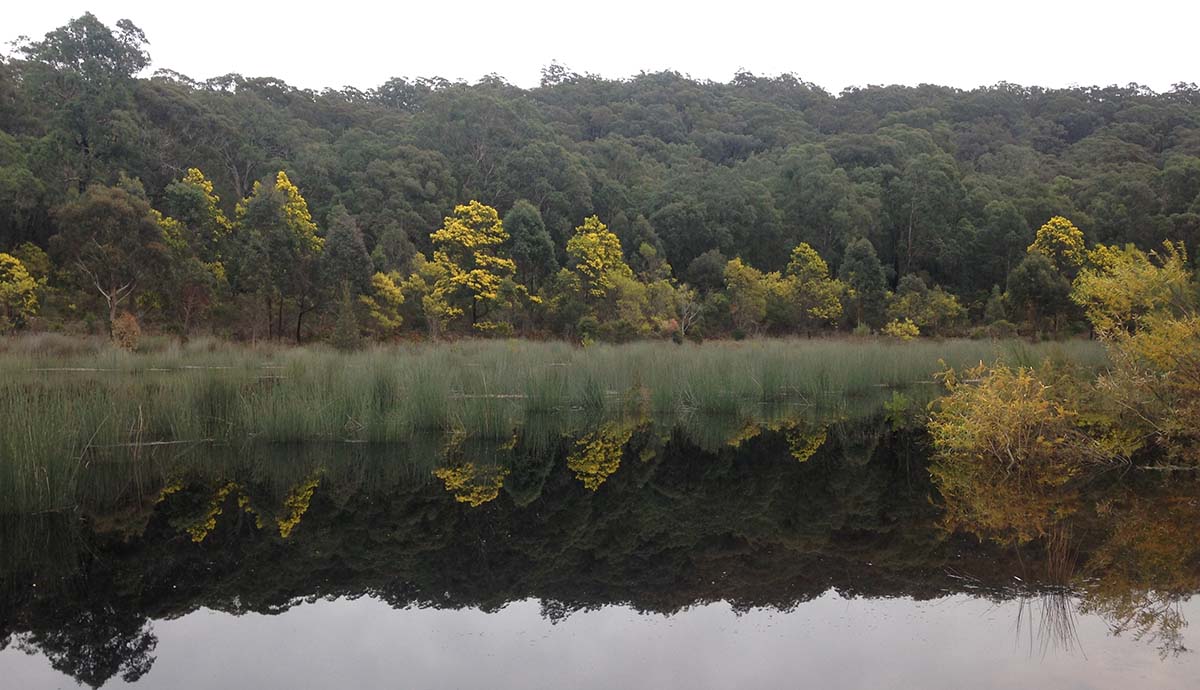October 25, 2017
Researchers to investigate the mystery of Thirlmere Lakes
Study to look for the cause of decline in water levels
Researchers from the University of Wollongong will join with colleagues from the University of NSW (UNSW) and the Australian Nuclear Science and Technology Organisation (ANSTO) in an effort to solve the mystery of the fluctuating water levels of the Thirlmere Lakes.
The lakes - Lake Gandangarra, Lake Werri Berri, Lake Couridjah, Lake Baraba and Lake Nerrigorang - are in the Greater Blue Mountains World Heritage Area, close to the township of Thirlmere. They are believed to be about 15 million years old.
While water levels in the lakes have fluctuated over time, in recent decades there has been a noticeable and persistent decline. Previous efforts to find the cause of the drying have been inconclusive, with longwall coal mining in nearby mines and a reduction in long-term rainfall patterns suggested as two possible causes.
It is not even known for sure if the current decline is unprecedented or part of a longer term cycle In response to community concerns, the NSW Office of Environment and Heritage (OEH) has committed $1.9 million to a research program that will provide a better understanding of the issue.
Dr Tim Cohen from UOW’s School of Earth and Environmental Sciences will lead a team looking into the lakes’ geomorphology, taking core samples to see how they have dried and filled over the years.
“UOW was selected to research the long-term history of Thirlmere Lakes, while the other project partners are contributing knowledge about groundwater, water balance and hard-rock geology,” Dr Cohen said.
“The group of researchers I've pulled together will seek to answer some fairly simple questions: Have the lakes dried before; when; and how often?”
 Lake Werri Berri, one of the five Thirlmere Lakes. Picture: Emily Barber
Lake Werri Berri, one of the five Thirlmere Lakes. Picture: Emily Barber
While the current decline has been called “unprecedented”, knowledge of the lakes’ water levels extends back only several decades.
“The obvious question from a scientific perspective is have the lakes dried out in the past?” Dr Cohen said.
“What evidence is there in the recent geological past that the lakes have dried out? Is it a natural phenomenon? Could declining rainfall lead to the lakes drying?
“We’ll be investigating the frequency of wetting and drying in the lake system. We’ll pull up cores of varying lengths from next to the lakes and from the middle of the lakes and use them to decipher the story that the lake sediment reveals.”
Evidence from the lake sediment may reach back several million years.
“Thirlmere Lakes is regionally unique in the sense that it has somewhere in the order of two million years’ worth of record in the sediments,” Dr Cohen said.
“We possibly won't be able to go back that far, but we might be able to go back hundreds of thousands of years, and then we might choose to focus on particular time periods – the last 50,000 years, for example, or the last 5,000 years.
“We might zoom right in and see whether things like La Nina and El Nino have a signature within the lake system; do the lakes dry in pronounced El Nino periods?”
:format(jpg)/prod01/channel_3/assets/live-migration/www/images/content/groups/public/web/media/documents/mm/uow239533.jpg)